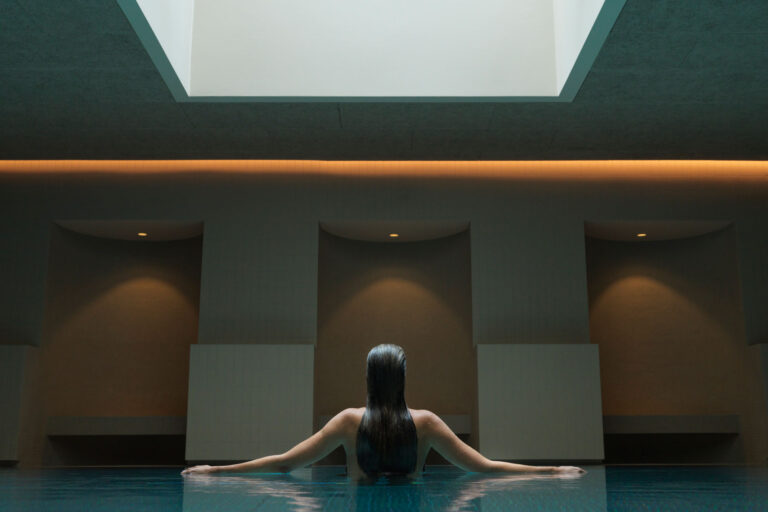Båstad, Sweden
Review: Ravinen Café & Bistro
The Nordics • Eat & drink • Review: Ravinen Café & Bistro in Båstad, Sweden
What is the restaurant in a nutshell?
Set within Ravinen Kulturhus – a contemporary art centre beside the historic Norrvikens Trädgårdar gardens in Båstad – Ravinen Café & Bistro reflects a growing trend: serious kitchens in Nordic cultural institutions. But unlike its urban counterparts, this one is surrounded by sea, forest and gardens – and it shows on the plate. Led by Båstad-born Chef John Moberg and a small, local team, the bistro serves precise, seasonal cooking grounded in place. It’s not flashy, but it’s far from ordinary – a restaurant that respects its setting and elevates it. Come for the art, stay for the food. Or the other way around.




What are the signature dishes?
There’s no single signature dish at Ravinen Café & Bistro – and that’s entirely the point. Instead, the kitchen champions a rotating cast of seasonal plates that echo the surrounding landscape. Think green pea pasta with roasted tomatoes and balsamic in early spring or shiitake fritters with seaweed, chilli honey and quinoa. The approach is local, precise and creative – with just enough edge to surprise and challenge the palate.
While the cooking is firmly grounded in the region’s produce, it also mirrors the setting – Ravinen Kulturhus – where art, architecture and nature converge. There’s a sense of clarity and restraint, but also curiosity. The food, much like the space itself, invites you to slow down and take it in.
A childhood dream
The kitchen is led by Head Chef John Moberg – born and raised in Båstad – whose return to the peninsula fulfils a childhood dream. He works closely with Pastry Chef Eva Mattsson, whose arrival marked the shift from café into full bistro fare. Chef Petter Bratt rounds out the team, bringing a refined edge to savoury dishes. The trio forms a tight-knit, creative unit rooted in deep local ties and a shared dedication to sustainable, hyper-seasonal cooking.
Flavourful and hearty dishes
On our visit, the seasonal menu showcased early-spring ingredients from the Bjäre peninsula’s fields and coast. We decided to share a few dishes and started with a tender, grass-fed piece of lower sirloin, served with bulgur wheat, feta cheese and Moroccan spices. The next dish was a rich and flavourful goulash, slow-cooked for hours with an impeccable depth of flavour.
Of course, we had to sample the vegetarian options as well. We went for the baked celeriac root, harvested nearby, served with a velvety celeriac cream, and a humble risotto with turned root vegetables – our favourite dish of the meal.
Chef Moberg let us in on the secret, which lies in the house-made broth. Each course felt deeply rooted in place, complemented by a passion for flavour and craft. Nothing overpowered, everything felt intentional.
A sweet ending
Pastry Chef Mattsson’s love for traditional Swedish baked goods – the kind made with generous amounts of sugar, butter and cream – is evident. From freshly baked cakes to rich, nostalgic pastries, the dessert offering stays close to its roots while holding its own alongside the more composed bistro fare. Indulgent!
Atmosphere and service
Refined yet casual, the restaurant sits somewhere between café and bistro. The spaces are unfussy, functional. In keeping with the building’s architecture, the interior is minimalist – but not to the point of sterility. The raw concrete walls and floors carry a warm tone, softened by wooden furniture and thoughtful details. It feels comfy, if not cosy.
Natural light is part of the programme. Large windows flood the room, highlighting the architecture and ensuring you never have to guess what’s on your plate. Service, handled by the small and confident team, was present but never intrusive.








Drinks anyone?
Chef Moberg’s commitment to the region doesn’t end with the food. The drinks menu at Ravinen Café & Bistro reads like a curated snapshot of Sweden’s ongoing beverage renaissance – and the Bjäre Peninsula is right at its centre.
Take the Brut Natur Havtorn from Beskows: a sparkling sea buckthorn drink with low sweetness and high acidity, somewhere between Nordic soda and pét-nat. Or their Vy Äpple & Humle, an apple and hops blend that drinks like a tart cider with a subtle bitterness. Both are made just down the road.
The kombucha, from Östergårds, pairs sea buckthorn with rosemary for something wild and herbaceous – sharp, fragrant and surprisingly food-friendly.
A burgeoning wine region
Then there’s the wine. Ljungbyholms Vingård, also on the peninsula, contributes structured, expressive bottles like the Phönix Solaris 2023 – crisp, floral and mineral – and the Rondo Claret 2023, which has the freshness of a Beaujolais with a distinctly Nordic edge.



What’s our final take?




What’s the region like?
Skåne doesn’t try to compete with Sweden’s north or centre – it doesn’t need to. Down here, the land softens, the pace steadies and the Danish influence lingers in everything from dialect to architecture. The cities – Malmö, Lund and Helsingborg – carry their weight, but the real rhythm is rural: broad fields, Baltic light, beaches that stretch without interruption. Skåne feeds the rest of the country, literally. Seafood, root vegetables, berries, game – all of it shaped by a farm-to-table culture that predates the phrase. Art is quiet but present. Design leans functional. It’s not the Sweden of snow and fjäll. It’s something gentler. And far more interesting than it lets on.
Ravinen Café & Bistro
Kattviksvägen 233
Båstad
Sweden

Urban
Rural

Trendy
Classic

Happening
Serene

Affordable
Lavish
Share this
Ravinen Café & Bistro
Kattviksvägen 233
Båstad
Sweden
Photography courtesy of Ateljé Lena and Ravinen Café & Bistro

Urban
Rural

Trendy
Classic

Happening
Serene

Affordable
Lavish












